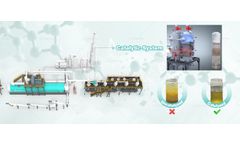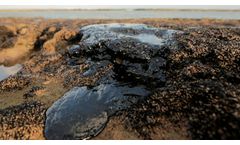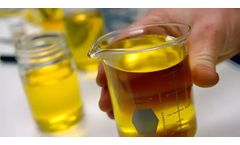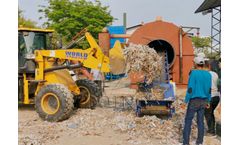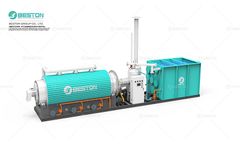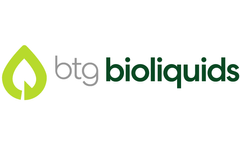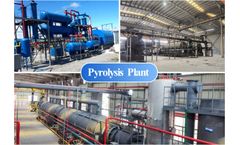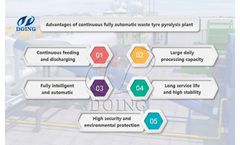Refine by
Pyrolysis Oils Articles & Analysis
131 articles found
One promising method for processing oil sludge is oil sludge pyrolysis, a thermal decomposition process that breaks down complex hydrocarbons into useful products like oil, gas, and solid residues. ...
Recent advances in catalytic pyrolysis have introduced a new breakthrough: significantly improving both the yield and quality of pyrolysis oil. ...
What Is Pyrolysis Technology? Pyrolysis is a high-temperature, oxygen-free process that breaks down organic materials, such as plastics, biomass, and waste tires, into useful by-products like oil, gas, and char. ...
By incorporating specialized catalysts into the pyrolysis process, industrial operators can significantly improve oil yield, enhance product quality, and optimize energy efficiency. ...
Its core objectives include: Reducing greenhouse gas (GHG) emissions Promoting sustainable land use and protection of biodiversity Ensuring traceability and transparency along the supply chain Pyrolysis Oil: A Key Player in Circular Economy Pyrolysis oil can be derived from a variety of feedstocks, such as: Waste plastics ...
This process results in valuable by-products such as oil (or pyrolysis oil), gas, and char, all of which have various industrial applications. ...
Through the use of oil sludge pyrolysis plant, oil sludge can be converted into valuable byproducts, such as bio-oil, carbon black, and gas, thus offering a twofold benefit: waste remediation and resource recovery. ...
When applied to plastic waste, plastic into fuel machine breaks down the polymers into smaller molecules, resulting in three primary by-products: pyrolysis oil, pyrolysis gas, and carbon black. These products can then be utilized as fuel or raw materials in various industries, providing both environmental and economic benefits. ...
How Catalysts Enhance Pyrolysis Oil Quality 1. Improving Hydrocarbon Composition Pyrolysis oil from non - catalytic pyrolysis typically contains a complex mixture of hydrocarbons, including a high proportion of heavy and oxygenated compounds. ...
Plastic pyrolysis plant results in several products, including gases, oils, and solid residues. Among these, plastic naphtha is one of the most sought-after components due to its versatility in further chemical processing. The pyrolysis oil extracted from plastics typically undergoes distillation to separate different fractions ...
The process of pyrolysis has gained significant attention as a method for converting biomass into valuable byproducts like biochar, syngas, and bio-oil. ...
To recycle plastic to fuel oil using a pyrolysis vessel, follow these steps: 1. Preparation of Plastic Material: Collect and sort the plastic waste, ensuring it is free from contaminants that may interfere with the pyrolysis process. ...
With the growing urgency to find sustainable energy sources, plastic fuel oil, derived from waste plastic through pyrolysis, has emerged as a promising alternative. ...
Sealing is a crucial factor in the overall performance and efficiency of a pyrolysis reactor. The technology behind pyrolysis revolves around the thermal decomposition of materials in the absence of oxygen. ...
When considering investment options for pyrolysis technology, opting for small-scale pyrolysis equipment can be a practical choice, especially if your business processes a limited amount of organic materials. ...
Revenue Potential The revenue potential of a mini pyrolysis plant depends on the market value of the by-products produced, including oil, gas, and char. Additionally, the plant’s efficiency in converting feedstock into these products directly impacts profitability. Revenue Streams: Oil and Gas: The primary revenue stream for a mini ...
In January 2014 BTG Bioliquids / Empyro BV started construction of its pyrolysis oil production facility in Hengelo, the Netherlands. The Empyro plant converts 5 tons per hour of wood residues into pyrolysis oil, process steam and electricity. ...
GFN Lieksa is a Green Fuel Nordic subsidiary operating a BTG Bioliquids fast pyrolysis bio-oil plant in the Kevätniemi industrial area in Lieksa. The Lieksa-based company will produce the bio-oil, with parent company Green Fuel Nordic Oy responsible for sales, marketing and product development. The raw materials for the ...
Pyrolysis is a transformative technology that can effectively process a wide range of waste materials, converting them into valuable products like fuel oil, carbon black, and gas. ...
Gas and Liquid Separation: The vaporized gases and liquids produced during pyrolysis are routed to a separation system, where they undergo cooling and condensation to convert them into marketable products such as syngas, pyrolysis oil, and carbon black. ...


